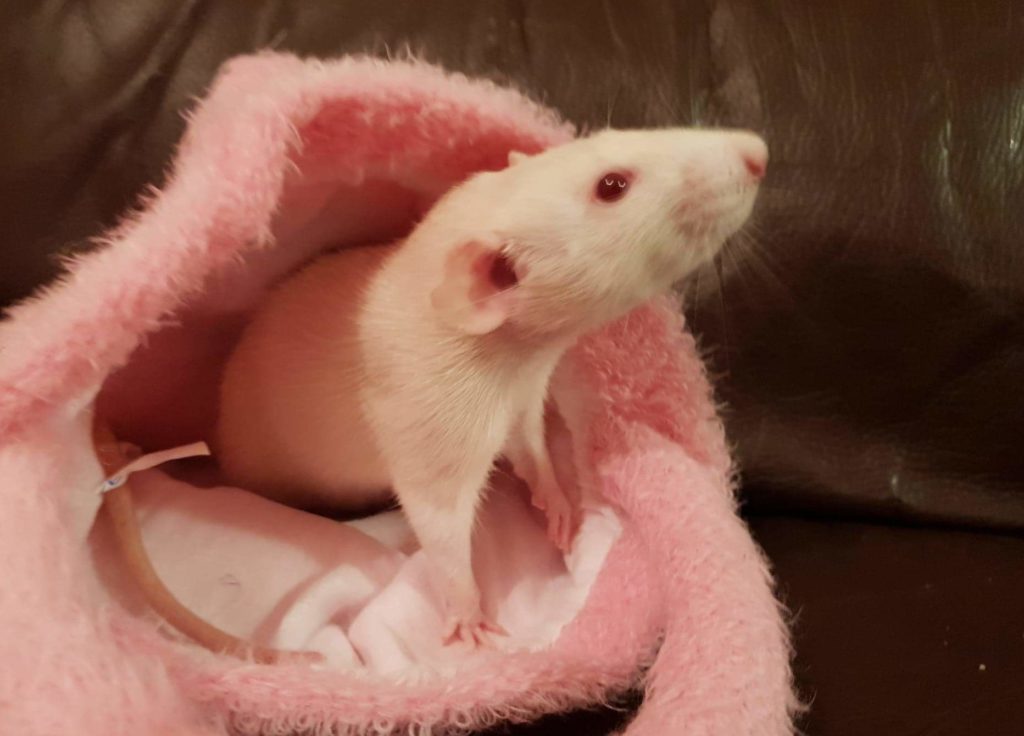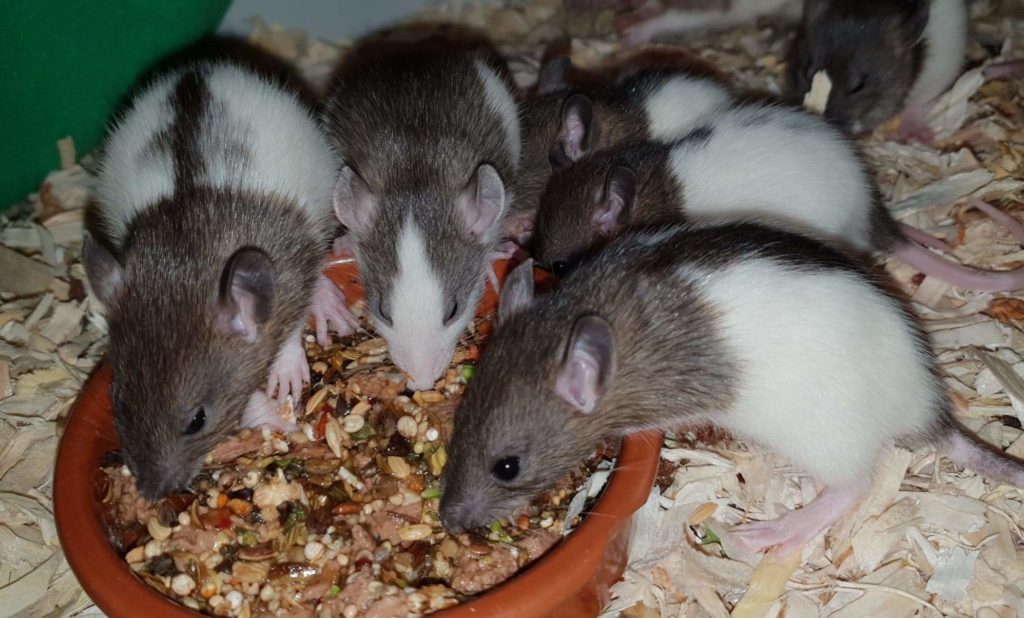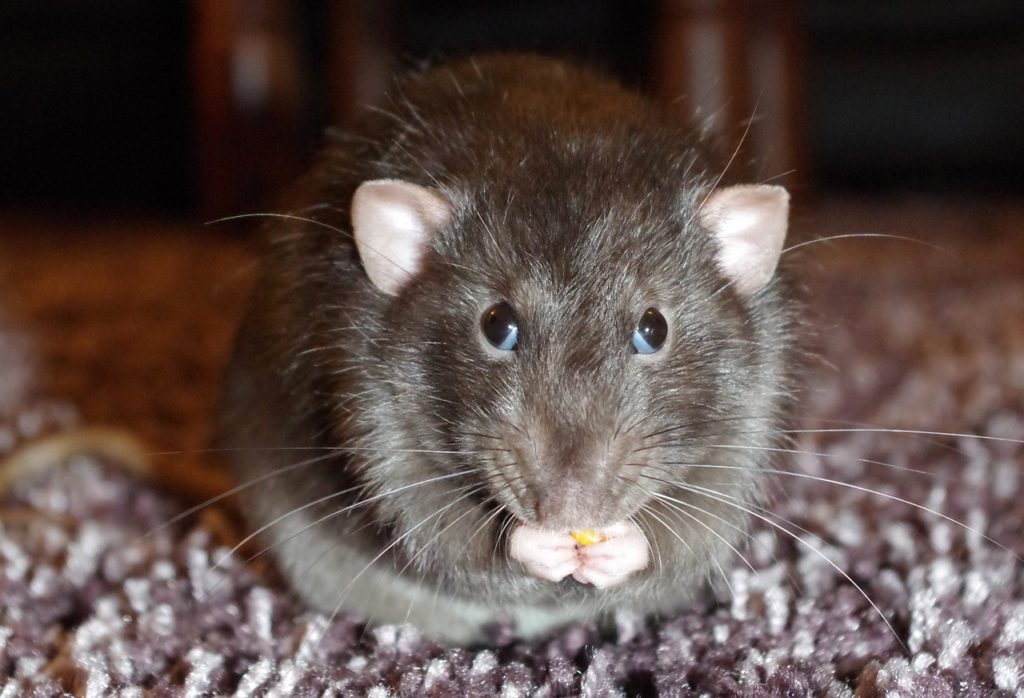Unfortunately, one of the most common health issues in rats are tumours – mainly fast-growing soft-tissue tumours – and mainly in overweight, older females.
But why is this?
Well, a number of reasons can contribute to these growths including diet, family tree and bad luck – however we will look at all of these in detail in this article – just to highlight the science behind each of the main two types and ways to avoid them in your pets – and what to do if you find them.
What Actually IS a Tumor in Rats?
“a swelling; usually a ‘neoplasm or ‘growth’ that may be benign or malignant, caused by unchecked, abnormal proliferation of cells”.
Neoplasm – ‘New growth’ – usually referring to cancers and abnormal cell production
Benign – Indicates that is it not ‘cancer’ – and usually suggests that a full recovery is likely
Malignant – A new tumour where multiplying cells invade and destroy tissues (a cancer)
A tumour can grow in any part of the body, but is most often seen, or felt, on or just under the skin. These tumours can grow rapidly in rats and can reach noticeable size very quickly. They are often soft to touch and move around within the skin.
Although not normally harmful in and of themselves (they are almost always benign) they can soon hinder mobility and cause changes to the surface of the skin surrounding or covering them. These tumours can easily be operated on and removed – but sadly often recur.
Other tumours may be growing for some time before being identified – especially in and around internal organs. They are usually found by identifying other clinical signs (visual changes) such as weight loss, lethargy and behavioral changes. They aren’t so easy to treat or remove due to their location.
Other tumours may actually appear clinically as a small wound that fails to heal (or keeps recurring) as well as strange cysts and abscesses. So anything that isn’t ‘normal’ or not normally there should be investigated.

So, Which Tumors Are Most Common In Rats?
There are two main tumors common in rats; Mammary and Pituitary.
The most common tumor by far is the mammary tumor – found in both female and male rats – although in the former by a huge margin. It is estimated that around half of all female rats over 18 months of age will get a mammary tumor. Similarly, pituitary tumours are mainly found in female rats also.
Various skin-cell tumors and reproductive (testicular) tumors are in there as well as those more rare cancers that can appear all over and inside the body. Often those in organs, bones or blood can’t be operated on as they are diagnosed so late and are in impossible places.
The best place to read about the specific neoplasia in rats is the wonderful Rat Guide (https://ratguide.com/health/neoplasia) who have explained in detail the clinical diagnosis of each tumor type and possible treatments.
Mammary Tumours in Rats:
Usually benign – these tumours are very fast growing, and can reach several inches in diameter if left. They can even weigh more than the rat themselves.
They are triggered by estrogen – and prolactin – levels after a female stops ovulating – and they often form in the armpits or groin as round, soft, unconnected lumps. They are also more common in overweight individuals.
As their name suggests, they form around the active tissues of each mammary gland (located beneath each nipple) and in female rats this can be a recurring issue – basically they can get a tumour in each nipple area. Neutering a female rat at any age can often prevent these tumours from forming entirely – and if the female is spayed at an early age or on the discovery of the first tumour – the prognosis is great and their life can be extended greatly.
These tumours often are not a health threat themselves – basically they won’t metastasize (spread) – but they can cause issues based on just their rapid growth and size.
Tumours also need to be fed – they aren’t growing by themselves. They ‘steal’ food from the rats digestion – ie what you are feeding them. So – when your rat has a tumor – you need to feed your rat a better quality and potentially a great volume of food to maintain their own bodyweight as well as feed the tumour.
You also need to make sure that – if you arent going to remove the growth immediately – that it doesn’t inhibit movement or cause damage. Skin can be opened or harden as it rubs on limbs or the ground; bodily functions can be impaired by the sheer bulk (such as eating, walking or grooming) and internal organs, nerves and blood vessels can be affected as its size increases.
Removal is the best option (along with a neuter ideally) and as these are only skin deep – so to speak – they are classed as only minor surgery and have a high success rate.
However, they recur very easily once the female reaches the trigger age (of menopause) and so multiple surgeries may be required in a lifetime.
Pituitary Tumors in Rats:
Although these are equally more common in older female rats – they are a totally different type of tumor pathway.
Forming inside of the skull (in the pituitary gland) they are rarely seen and stay quite small in comparison as are very slow-growing. They too are usually benign – but as there isn’t much space in the brain cavity – they cause serious health issues by their very presence.
As you can’t see these tumors at all, you have to be on the lookout for some behaviour or clinical changes – such as head tilt, acquired aggression, weakened limbs, blindness and confusion. These are usually caused where the tumour has increased in size enough to block nerves and cause neurological symptoms.
However, as the pituitary gland is also responsible for many essential hormones within the body, the more astute owner may also spot and connect up such random symptoms as hair loss, thinning skin, reduced fertility and diluted urine.
These pituitary tumors are, however, very well fed with blood vessels (vascular) and so often can hemorrhage (rapid blood leakage or loss) and cause associated rapid traumas like seizures and paralysis. They can even cause sudden death.
All pituitary tumors are classed as terminal as they cannot be operated on (even though they are technically benign) – but that doesn’t mean they have to be a short term health issue.
As with mammary tumors – these tumors are linked with higher prolactin levels and more common in unneutered females. The true cause of these is as yet undetermined, but sex, age and diet are believed to be key factors in their formation and growth.
Certain treatments can help extend life many months past diagnosis depending on the location, severity and stability of the tumor itself. Medications taken as soon as possible after diagnosis can shrink the tumors and prevent their worst – and potentially fatal – symptoms.

How Can You Prevent Tumors In Rats?
Well, as mentioned above – neutering a female can greatly reduce her chances of developing a tumor – and although waiting until they get their first mammary tumor is a great time to consider this surgery type – it may already be too late for a pituitary tumor of course.
Not saying that that she will have one or the other – but if you are waiting for something to go wrong before you fix it – often you wont have as good a result as if you acted in advance. Treatments are improving for rat health for sure – but if you can avoid the development of a tumor in the first place – that has got to be far better than allowing the body to create the conditions ripe for tumor development in the first place, right?
Another great way to reduce the incidence of tumors in your rats – both males and females is to control their diet. Just like with humans – feeding great foods in the right way can make a mountain of difference to health. Not only can it prevent health issues completely, it can reduce its effects once diagnosed and in some cases it can reverse the condition completely.
So certainly worth taking more seriously.
And just like with humans – if the diet you feed is interesting and tasty – it doesn’t matter what it is made of. You set your own standards and whatever is outside of that diet isn’t ‘missed’ as it is never introduced. Just like young kids don’t miss chocolate and sweets if they don’t ever have them?
Many breeders agree that feeding ad-lib and introducing too many fatty treats can greatly increase the chances of tumor development. So we suppose it is all to do with your own husbandry preferences: Pleasing your rats with all the treats you want to give – or controlling their diet a little bit more tightly and hoping to prevent disease in old age and extend their lifespan and, ultimately, the time you have together?

______________________________________________________________
Dictionary of Veterinary Nursing – Lane & Guthrie
The Scuttling Gourmet – Campbell
Diseases of Small Domestic Rodents – Richardson